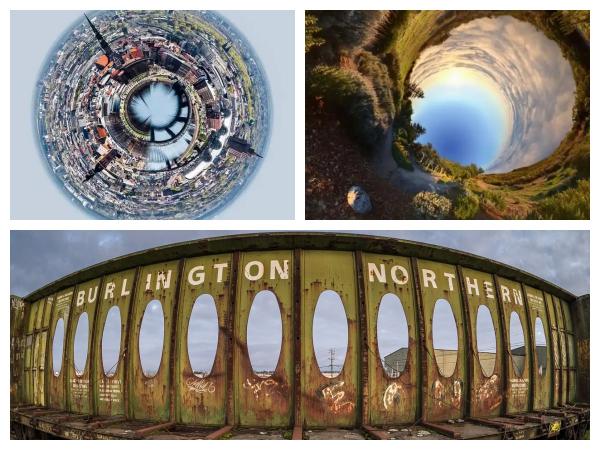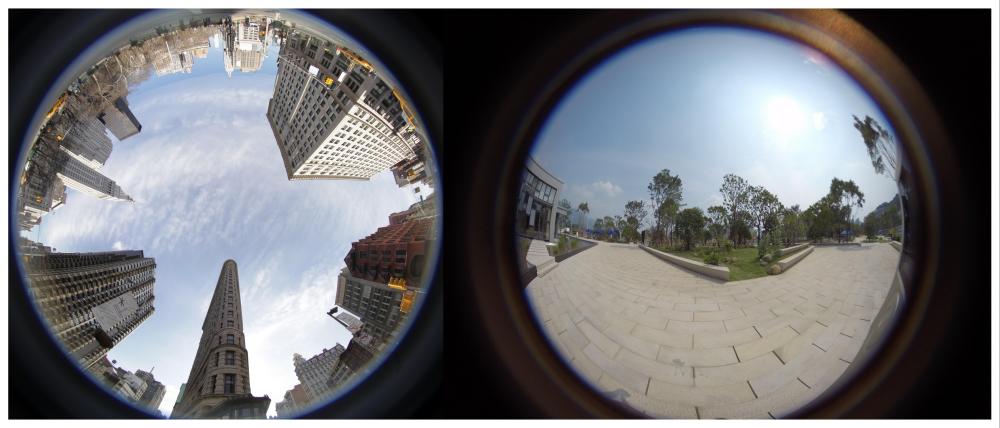- Home
- News
- What Are The Main Challenges of Fisheye Stitching Technology When Dealing With Distortion?
What Are The Main Challenges of Fisheye Stitching Technology When Dealing With Distortion?
Fisheye stitching technology is a common image processing technology, which is mainly used to stitch and fuse pictures taken by multiple fisheye lenses into panoramic or other specific visual effect images, and has wide application value.
Due to the distortion characteristics of fisheye lenses, in practical applications, the first problem that fisheye stitching technology needs to deal with is distortion. When dealing with distortion, we mainly face the following challenges:
1.Accuracy challenges for large distortion correction
Fisheye lens imaging has serious barrel or pincushion distortion, and it is not easy to correct it to the image geometry under normal viewing angle. The correction process requires accurately determining the distortion parameters and applying appropriate geometric transformations to restore the true shape of the image.
However, fisheye lenses of different models and parameters produce different distortion patterns, making it difficult to accurately correct them using a unified, high-precision general model, which requires specific algorithms and techniques.
Fisheye lenses have severe barrel or pincushion distortion
2.Image feature point extraction is difficult
Due to the complexity and high distortion of fisheye images, the distribution of feature points in the image becomes irregular and severely deformed, making it more difficult to extract feature points, which is a challenge for image stitching algorithms based on feature matching.
Features that are easy to identify and match in normal-view images may undergo changes such as stretching, compression, and displacement in fisheye images, making it difficult for feature extraction algorithms to accurately extract stable and representative feature points. Therefore, when performing feature matching between multiple fisheye images, it is easy to have mismatches or insufficient matches.
3.Real-time processing and efficiency challenges
In scenarios that require real-time monitoring and processing, especially in high-resolution and large-field-of-view application scenarios, fast and accurate processing of fisheye distortion is a challenge, requiring efficient algorithms and computing power to achieve real-time fisheye stitching effects. For example, in real-time monitoring or virtual reality scene roaming, it is necessary to quickly correct distortion and complete stitching.
However, the computational complexity of complex distortion correction and stitching algorithms is too large. To complete high-precision processing in a short time, there are high requirements for hardware computing power and algorithm optimization. If the real-time requirements cannot be met, the application will experience freezes and delays, affecting the user experience.
There are difficulties in fast and accurate processing of fisheye distortion
4.Difficulty in coordinating differences from different perspectives
Fisheye lenses can capture images with extremely wide viewing angles. When stitching together multiple fisheye images, the viewing angles and corresponding distortions of different images are different. For example, the distortion is usually smaller near the center of the lens, but more obvious at the edge of the lens.
How to coordinate these differences so that the stitched panoramic image looks natural and reasonable as a whole, without image distortion and logical incomprehension caused by improper perspective connection, is also a major challenge. For example, when stitching together fisheye images of indoor scenes taken from different angles, it is easy to see abrupt perspective changes near the edge.
5.Difficulty in processing overlapping areas of images
In fisheye stitching, distortion leads to complex deformation of content in overlapping areas of images. To achieve natural and seamless fusion, it is necessary to consider the impact of differences in distortion levels at different locations on the fusion effect.
Conventional fusion methods such as simple weighted average often cannot adapt to such complex distortions, and may result in obvious stitching marks, unnatural color transitions, or discontinuous object contours, ghosting, and distortion in the fusion area. For example, when stitching fisheye images of scenery, if the sky and the ground are not handled well in the overlapping area, problems such as color discontinuity and stiff scene stitching will occur.
The overlapping areas of fisheye distorted images are difficult to handle
6.Challenges of environmental factors such as light
Under different environmental conditions, factors such as lighting and scene complexity will affect the performance of distortion, increasing the complexity of distortion processing. At the same time, the brightness difference between different lenses will also cause the quality of the stitched video to deteriorate, and an effective brightness compensation algorithm is needed to solve this problem.
7.The impact of different lens quality
The quality of the fisheye lens also has a great impact on the distortion processing. Low-quality lenses will make it difficult to correct the distortion.
In summary, fisheye stitching technology faces many challenges when dealing with distortion. When applying it, it is necessary to comprehensively consider these challenges and adopt corresponding treatment methods, and select appropriate correction algorithms and technical means to improve the stitching effect and image quality.
Final Thoughts:
ChuangAn has carried out the preliminary design and production of fisheye lenses, which are widely used in various fields. If you are interested in or have needs for fisheye lenses, please contact us as soon as possible.


